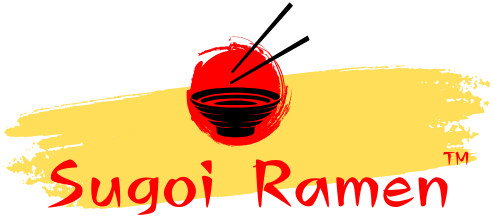Ramen has long been a staple in Asian cuisine, celebrated for its comforting broth, chewy noodles, and rich flavors. However, when considering its place in a balanced diet, many people wonder, “Is ramen OK on a diet?” This question brings forth an intriguing discussion about its nutritional value, preparation methods, and potential role in maintaining a healthy lifestyle. In this article, we delve deep into the topic, examining how ramen can fit into a variety of dietary needs.
Understanding Ramen’s Nutritional Profile

To evaluate whether ramen is suitable for a diet, it’s essential to analyze its core components:
1. Noodles
Ramen noodles are traditionally made from wheat flour, water, and alkaline salts. They are a source of carbohydrates, providing energy but often criticized for their high glycemic index. While instant ramen noodles may be low in fiber and protein, fresh or whole-grain versions can offer better nutritional benefits.
2. Broth
The broth can vary significantly, from light and clear to creamy and rich. Traditional broths like miso, shoyu, or bone-based varieties contain essential nutrients like collagen, amino acids, and minerals. However, sodium levels are often high, particularly in pre-packaged ramen, which is a factor to consider for those monitoring salt intake.
3. Toppings
Ramen toppings are what make the dish versatile and customizable. Common additions like eggs, vegetables, seaweed, and lean proteins enhance its nutritional value. Incorporating more vegetables and lean proteins can transform ramen into a balanced meal.
Is Ramen OK on a Diet? Breaking Down the Factors
1. Portion Control
Ramen can be calorie-dense, particularly when paired with rich broths and fatty meats. Practicing portion control is crucial. Opt for smaller servings or consider sharing a bowl if dining out.
2. Choice of Ingredients
Switching to healthier ramen noodles, such as those made with whole grains or shirataki (konjac) noodles, can significantly reduce calorie and carbohydrate intake. Additionally, choosing broths low in fat and sodium further aligns ramen with dietary goals.
3. Balanced Toppings
Adding nutrient-dense toppings like spinach, kale, carrots, mushrooms, and tofu enhances the dish’s fiber and vitamin content. Protein sources like boiled eggs, grilled chicken, or shrimp provide satiety and support muscle maintenance.
Healthy Ramen Recipes for Dieters

Adapting ramen to fit a healthier lifestyle is easier than it seems. Here are some creative ideas:
1. Low-Calorie Miso Ramen
- Ingredients: Shirataki noodles, miso paste, spinach, tofu, mushrooms, and sesame seeds.
- Preparation: Combine miso paste with vegetable broth for a light base. Add shirataki noodles, sautéed vegetables, and tofu for a low-calorie, nutrient-rich dish.
2. High-Protein Chicken Ramen
- Ingredients: Whole-grain noodles, chicken breast, bok choy, boiled eggs, and bone broth.
- Preparation: Use bone broth as the base for added collagen and protein. Include grilled chicken breast and eggs for lean protein, and top with bok choy for added greens.
3. Vegan-Friendly Ramen
- Ingredients: Zucchini noodles, vegetable broth, tofu, shiitake mushrooms, and kale.
- Preparation: Replace traditional noodles with zucchini spirals for a lower-carb option. Add tofu and mushrooms for protein and flavor.
Ramen’s Role in Weight Management
1. Satiety
The combination of broth and high-protein toppings in ramen can help increase feelings of fullness, reducing the temptation for high-calorie snacks later in the day.
2. Customizability
Ramen’s versatility allows you to tailor the dish to your specific dietary needs. For those following a low-carb or ketogenic diet, replacing noodles with zucchini or shirataki is an excellent alternative.
3. Nutrient Density
Incorporating nutrient-dense ingredients like seaweed, mushrooms, and leafy greens enhances the dish’s vitamin and mineral content, making it more suitable for a balanced diet.
Tips for Choosing Healthier Ramen Options

- Read Labels: If purchasing pre-packaged ramen, choose options with lower sodium and avoid added preservatives.
- Homemade Broths: Making your broth allows you to control sodium and fat content while incorporating nutritious ingredients like miso or vegetables.
- Mindful Cooking Techniques: Opt for grilling or steaming toppings rather than frying to reduce calorie intake.
Ramen and Specific Diet Plans
1. Low-Carb Diets
Ramen can fit into a low-carb diet by substituting traditional noodles with alternatives like zucchini or shirataki.
2. High-Protein Diets
Adding lean protein toppings, such as grilled chicken, shrimp, or tofu, transforms ramen into a protein-packed meal.
3. Plant-Based Diets
For vegetarians and vegans, ramen can be enriched with plant-based proteins like tempeh, tofu, or edamame, paired with a vegetable or miso-based broth.
Ramen: Indulgence vs. Nutrition
While ramen is often perceived as an indulgent comfort food, strategic ingredient choices can turn it into a nourishing dish. The key lies in mindful preparation, balancing macronutrients, and selecting nutrient-dense toppings.
Conclusion
Ramen can be a part of a healthy diet with mindful preparation and ingredient choices. By opting for nutrient-rich toppings, low-sodium broths, and healthier noodle alternatives, you can enjoy this comforting dish without compromising your dietary goals. With its versatility, ramen can be tailored to fit various diet plans, proving that it’s possible to indulge while staying on track with your health.
FAQ’s
Q1. Is ramen OK on a diet?
Yes, ramen can fit into a diet when portion sizes are controlled, and healthier ingredients are used, such as whole-grain noodles and nutrient-rich toppings.
Q2. How can I make ramen healthier?
Opt for low-sodium broths, incorporate plenty of vegetables, and use lean protein sources to enhance the dish’s nutritional profile.
Q3. Can I eat ramen on a low-carb diet?
Absolutely! Substitute traditional noodles with shirataki or zucchini noodles for a low-carb alternative.
Q4. What are the healthiest toppings for ramen?
Vegetables like spinach, kale, and mushrooms, along with protein sources like eggs, tofu, and grilled chicken, are excellent choices.
Q5. Is instant ramen unhealthy?
Instant ramen is often high in sodium and lacks nutrients. However, adding fresh vegetables and proteins can improve its nutritional value.







